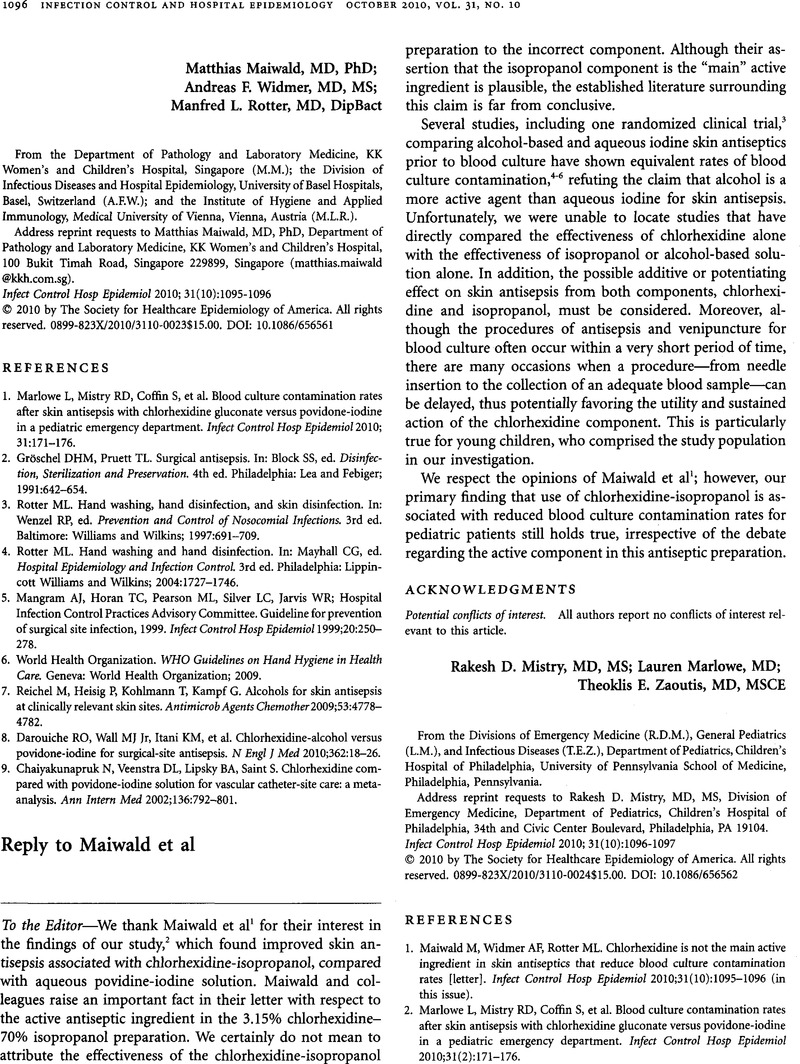No CrossRef data available.
Article contents
Reply to Maiwald et al
Published online by Cambridge University Press: 02 January 2015
Abstract
An abstract is not available for this content so a preview has been provided. Please use the Get access link above for information on how to access this content.

- Type
- Letters to the Editor
- Information
- Copyright
- Copyright © The Society for Healthcare Epidemiology of America 2010
References
1.Maiwald, M, Widmer, AF, Rotter, ML. Chlorhexidine is not the main active ingredient in skin antiseptics that reduce blood culture contamination rates [letter]. Infect Control Hosp Epidemiol 2010;31(10):1095–1096 (in this issue).Google Scholar
2.Marlowe, L, Mistry, RD, Coffin, S, et al.Blood culture contamination rates after skin antisepsis with Chlorhexidine gluconate versus povidone-iodine in a pediatric emergency department. Infect Control Hosp Epidemiol 2010;31(2):171–176.Google Scholar
3.Calfee, DP, Farr, BM. Comparison of four antiseptic preparations for skin in the prevention of contamination of percutaneously drawn blood cultures: a randomized trial. J Clin Microbiol 2002;40(5):1660–1665.Google Scholar
4.Little, JR, Murray, PR, Traynor, PS, Spitznagel, E. A randomized trial of povidone-iodine compared with iodine tincture for venipuncture site disinfection: effects on rates of blood culture contamination. Am J Med 1999;107(2):119–125.Google Scholar
5.Strand, CL, Wajsbort, RR, Sturmann, K. Effect of iodophor vs iodine tincture skin preparation on blood culture contamination rate. JAMA 1993;269(8):1004–1006.Google Scholar
6.Kiyoyama, T, Tokuda, Y, Shiiki, S, Hachiman, T, Shimasaki, T, Endo, K. Isopropyl alcohol compared with isopropyl alcohol plus povidone-iodine as skin preparation for prevention of blood culture contamination. J Clin Microbiol 2009;47(1):54–58.Google Scholar




